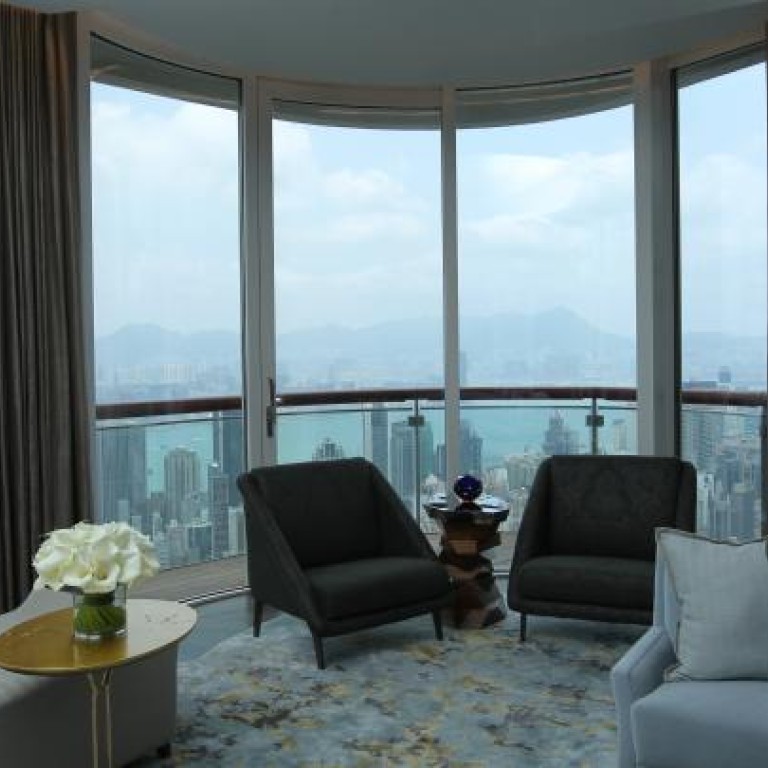
Who's paying nearly a million in rent?
Is it an American banker? A mainland tycoon? Who has HK$850,000 a month to spend on RENT? Will the person who has leased the first 6,000 square foot Opus apartment to be rented - Duplex A, one of the double-level garden apartments with a private pool and garden, for HK$850,000 a month for three years, please stand up. Who has a housing allowance that big? Anyone? A free dinner at the Foreign Correspondents’ Club is on offer for whoever can tell me Hong Kong’s highest housing allowance.
After some prodding, Swire Properties admitted on Thursday they had also sold an apartment in the Opus, the first residential project in Asia designed by Pritzker Prize-winning architect Frank Gehry. They could have learned this from the SCMP’s Property Post and this column on Wednesday, but it’s nice to hear it from the horse’s mouth.
The only thing different is the reported price - the 6,755 sq ft apartment on the 8th floor made HK$430 million, Swire says, HK$40m less than reported, but still a mind-blowing record-breaking HK$63,656 per square foot.
“These two transactions mark an important milestone for Opus Hong Kong,” said Martin Cubbon, chief executive of Swire Properties. “We embarked on this project with Frank Gehry with the intention of producing an exceptionally rare work of architecture; these transactions demonstrate the market’s appreciation for our achievement.” You may be right Martin, but it also shows someone is being paid much too much if they can afford nearly a million bucks a month in rent. Still, that’s two flats gone, ten to go...
Fishy business
When a Swiss bank recommends investing in an ocean fish farm, you have to wonder. Although, oddly enough, Switzerland does have an Admiral, it is the country blessed with cheese, chocolate and cuckoo clocks, but no coastline.
So when Swiss bank Sarasin, unaware of this irony, puts out an excited press release exhorting investors to pile into the Dalian Zhangzidao Fishery Group, it smacks of vegetarians describing the best way to slice beef Carpaccio.

But first Sarasin tells deep sea horror stories of other, nasty, fish farms. Not the boys from Dalian. Who, incidentally in 2006, listed on the SME board of the Shenzhen stock exchange, (Zhangzi Island, 002069)should you fancy a flutter.
Hongkongers eat their weight in seafood annually; double what the Taiwanese and mainland Chinese consume and 20 per cent more per head than even the Japanese, so it’s not soothing to read that fish are usually intensively farmed and fed food made from wild fish, and that antibiotic and that growth hormones are ubiquitous. Half of all the fish we now eat is farmed, Sarasin cautions. And aquaculture has not stopped overfishing of the oceans, but has increased pressure on wild stocks because farmed fish eat feed made from wild fish. On average, 60% of aquaculture feed worldwide comes from wild catch, the bank adds.
So, “a clear sustainability strategy is vital for investors,” the bank concludes. Well, yes.
Investors should opt for aquaculture companies with a dedicated sustainability strategy, who qualify for “Bank Sarasin’s sustainable investment universe,” such as, Dalian Zhangzidao Fishery Group.
So it’s off to the Dalian website to find out just how they are farming fish without drugs and forcing fish to be cannibals. Zhangzidao Fishery Group possesses 70,000 watery hectares, their site says. This is an “A” level seawater area, is the largest company of bottom-cultured precious seafood in China.
The company has the “largest clean sea waters in China and produces top grade Yezo scallops, sea cucumbers, abalones, sea urchins and conches. “
“The company has set up many high-standard biological laboratories with world-class sophisticated testing equipments and excellent capacity that can meet the FDA and EU test requirements.” But no mention of sustainability.
They claim a “Production Model that can not be duplicated.” Sounds promising, but no explanation. They adopt the “ecological, healthy and scientific production model of sea bottom multiplication and leads the ocean fishery industry in changing towards a circular economy and a more reasonable growth model.” (sic) Great, but still no hint of what they actually do differently from other fish farms.
If they were practising sustainable, environmentally friendly methods, they’d plaster this all over their website, surely? And so, finally, to the lady whose name appeared on the bank’s release. I asked her just how were they able to produce these truckloads of sustainable fish? Funnily enough, she didn’t know.

